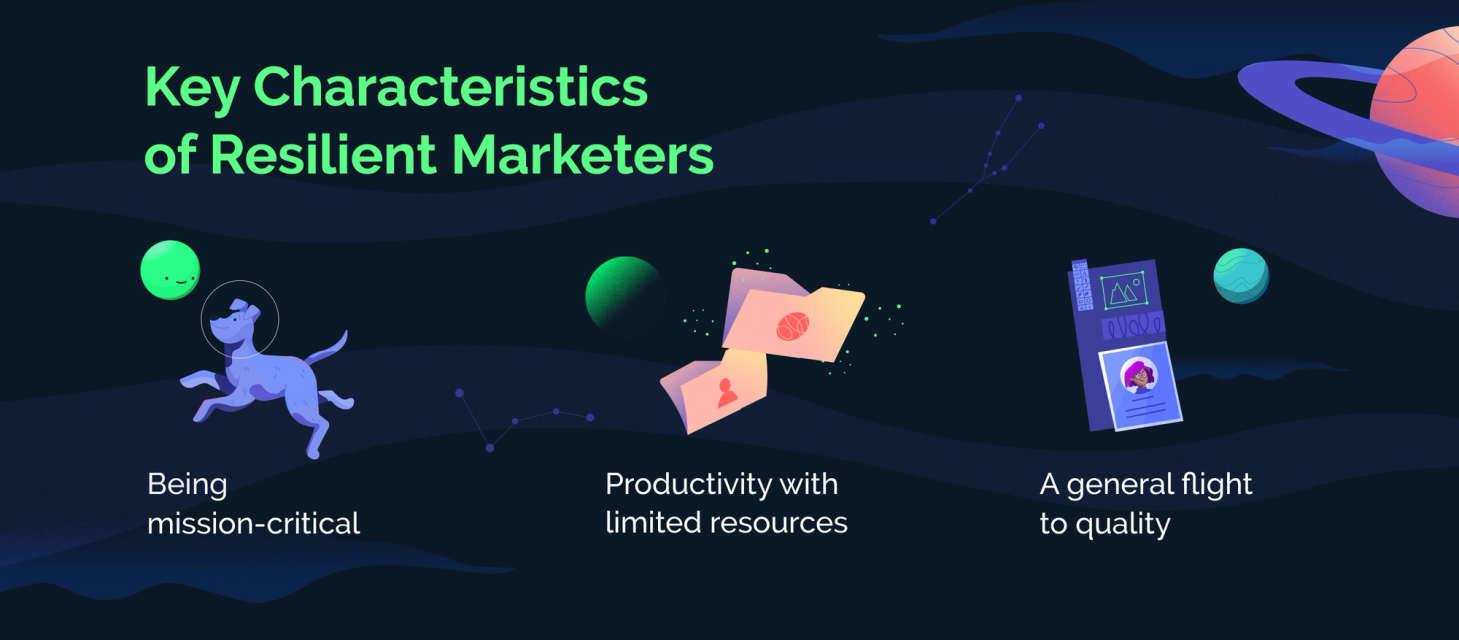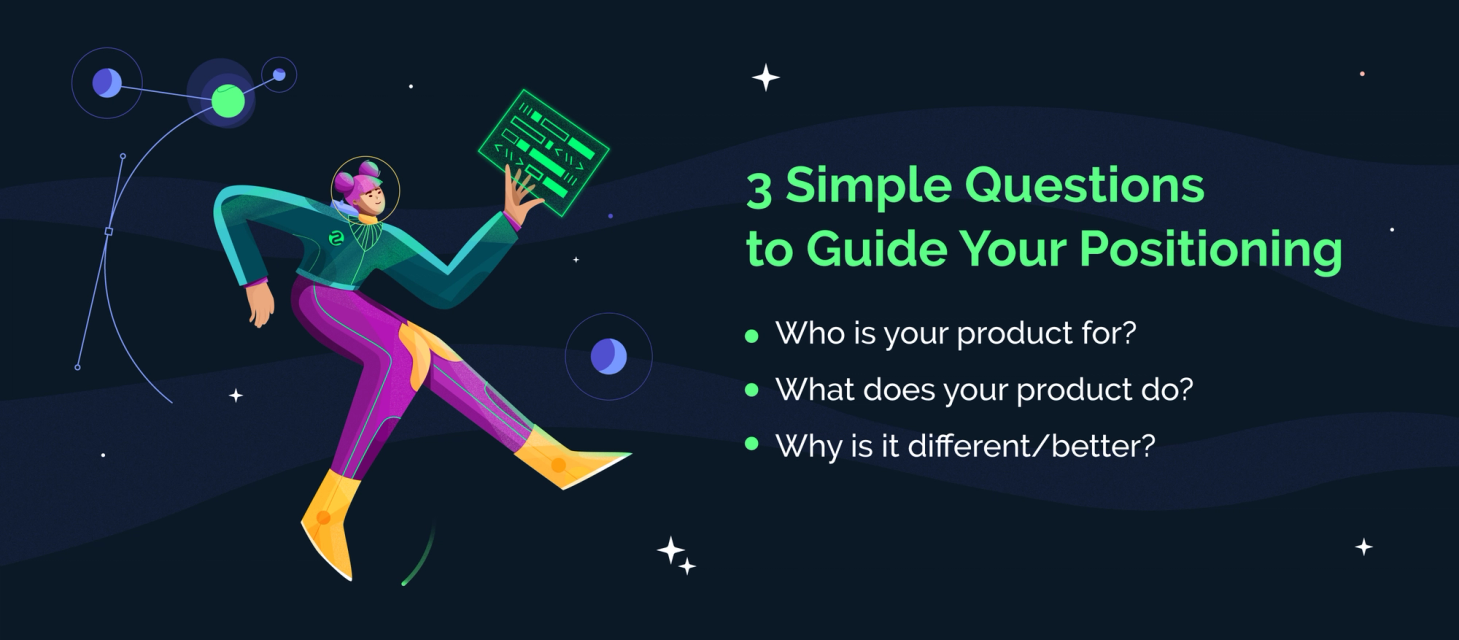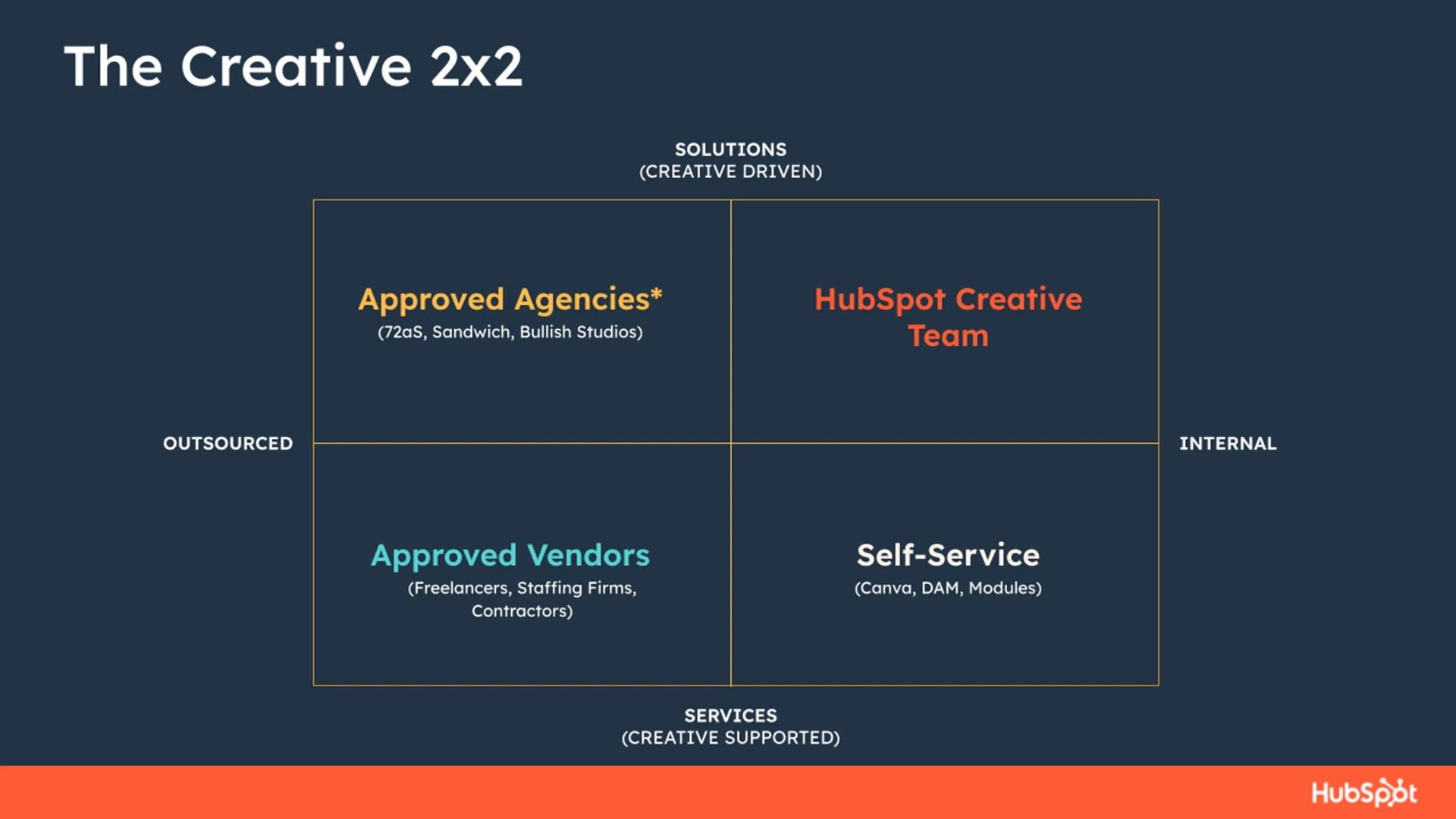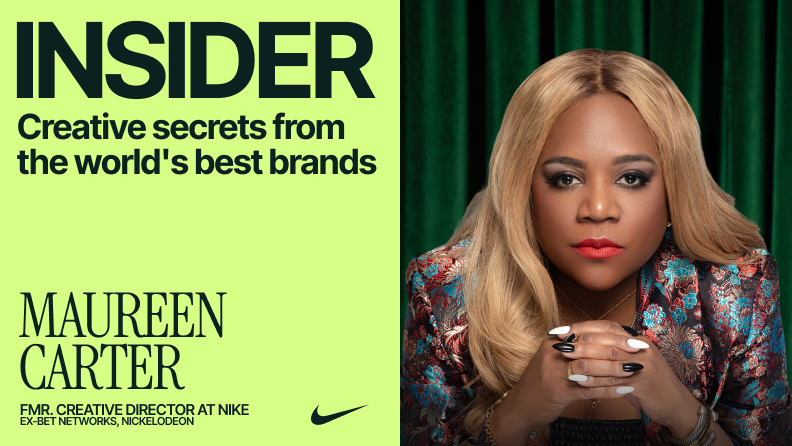
Anyone else relieved to say goodbye to 2023?
Between a clingy pandemic, civic unrest, straight-up war, and a sketchy economic climate, we’ve all had our hands and our hearts full.
But… we made it. It’s a new year, and though doom merchants are selling recession fears for ten cents on the dollar, I find myself feeling hopeful.
“Why on Earth?” You might ask.
Simple: I’m surrounded by whip-smart, resilient marketers, and I’m confident we can figure it out together. That’s exactly what Superside set out to do when we hosted the Momentum Summit back in November.
If you missed it, it was all about how marketers and designers can make smart bets in the face of uncertainty and scale through a downturn. Honestly, I’m still digesting all the lessons from the summit, so I thought creating a marketing checklist would be a good exercise.
Then I thought, you dear reader, might benefit from my Momentum-inspired marketing checklist, too. And so here we are…
Click to jump ahead:
Momentum, Check! A 5-Step Marketing Checklist
Not to slow the momentum…
…but before we get into today’s marketing checklist, I’d like to explain, well, why these steps. In short, they all tie in with key resilience characteristics: “Being mission critical, enhanced productivity with limited resources, and a general flight to quality.”

Canny Venture Capitalist, Rajive Keshup, pointed out these characteristics in reference to sectors primed for growth, despite the predicted recession. I’d argue, they apply just as strongly to the people charged with driving that growth: Marketers.
To not just weather but get better in the year to come, marketers will need to be ruthless in their mission focus, relentless in their efficiency, and as obsessed as a cat chasing a laser pointer in their quest for quality.
Easier said than done, right?
Together, we can get there. Here are five steps to hone in on these characteristics and kick off the year with unstoppable momentum:
Break Down Your Big Scary Marketing Goals
If you’re looking at your targets for 2024 and wondering how the heck you’re going to hit them, take a step back. Break it down.
There may be a recession in the wings, but there are things you can control.
Start with the building blocks of your KPIs and what is measurable, what you know you need in order to get to those core KPIs or to get close. Handle the most tangible stuff first. Then layer in the stuff that’s a little bit harder to measure or predict. And now you have a starting point.

Anderson, the marketing mind behind Austin-based AI unicorn Jasper, was talking about how to approach budgeting when she shared this nugget of wisdom. But the insight applies whether you’re a CMO wrangling an annual marketing plan or a growth marketer charting strategies and key performance indicators (KPIs) for Q1.
In fact, doing this exercise as a mid-level marketer can help you align more closely with your leader’s goals, and ultimately, the company mission. You’ll either come away with a clear path to achieving your targets, or the data you need to have a frank conversation about the odds of success and the smart bets you’ll have to make to fill the delta.
Amrita Mathur, Superside’s VP of Marketing, has a super simple way of thinking about this type of exercise. She creates two buckets:
- The shit that’s going to work and yield results with high probability.
- The shit that may work, but if you don’t try it, you’ll never know.
So, checklist item number one, fill your buckets.
Marketing checklist item #1: Make a list of proven strategies and potential experiments.
- Fill your first bucket with proven initiatives or channels—in a spreadsheet, list each one with data on past performance, along with key action items and see how close this gets you to your targets.
- Fill your second bucket with experiments and moonshots—in the same spreadsheet, list all the bets you could make to get closer to your targets.
- Calculate what percentage of your targets can be achieved through proven methods.
- Prioritize your experiments and moonshots using a simplified ICE method: Rate the Impact, Confidence, and Ease of each idea as low, medium, or high.
- Assess the likelihood of reaching your targets based on your projections for proven and unproven methods. Discuss your findings and problem-solve with your team or leader if your numbers fall short.
Get Your Story Straight and Align Your Marketing Strategy
Marketing goals and strategies are all well and good. But there’s another, arguably even more important, aspect to being mission critical: Telling the right story.
After all, without the right story, those marketing goals will be even more elusive.
A lot of marketers are having a hard time hitting goals, generating revenue right now because of what’s happening in the market. And I think it’s a great time to talk about positioning because a lot of things we think are sales and marketing challenges, actually end up being positioning challenges.

DG, as fans call him familiarly, describes positioning as a way to frame your product. With all the noise out there, a strong position finds the gaps—the lulls amidst the roar—where you can take the mic and be heard by your target audience.
His former company Drift is the perfect example. Without strong positioning, Drift could’ve easily been just another one of the 200 billion trillion stars in the galaxy of marketing tools. Instead, they rocketed to the forefront of their own category by repositioning live chat as a new way for sales teams to generate revenue, rather than a customer support tool.
Though positioning is best strategized shoulder to shoulder with your CEO, it can help to start with three simple questions:
- Who is your product for?
- What does your product do?
- Why is it different/better?

If you can answer these three questions clearly and directly, you’ll have the foundations, or at least, the puzzle pieces for a distinctive position. And even if you already have a strong story, with the dizzying speed at which products and markets spin, it’s worth repeating this exercise to make sure your positioning is still on point.
Marketing Checklist Item #2: Answer Three Simple Questions to Align on Positioning
- Create a doc (or a spreadsheet… dealer’s choice!) and answer DG’s three simple positioning questions.
- If you have an established brand story, assess whether it’s still accurate and compelling based on your answers to these questions.
- If you don’t have positioning in place, create a deck to showcase your answers.
- Book time to align with senior leadership, whether you’re starting from scratch, proposing a change order, or reaffirming your present positioning.
- Work with leadership to turn that story into a marketing strategy for 2024.
Unblock Yourself to Focus on Your Marketing Goals
In broad strokes, you’ve locked in your mission. You know your brand story. You’ve laid out your marketing goals… now make sure you have the space to focus on them.
Especially at the beginning of a new year, it’s easy to get sucked into 101 new projects. Growth hacker, Max Bidna, swears by the Eisenhower Matrix to help you stay cat-chasing-a-laser-pointer-focused on the right things instead.

Bidna, also known as Marketing Max, explains that everything on your to-do list falls into one of these four boxes. Naturally, we prioritize items that fit into the “urgent and important” quadrant. But Bidna cautions against focusing on this quadrant to the exclusion of less urgent, but equally important tasks.
As marketers, that often includes undertakings like customer research, branding, and positioning (see step two!). In other words, crucial work yet regularly perceived as unrelated to revenue… and thus “not urgent.”
There are things in marketing that we know we need to do, but normally, there’s a long list of things that fall in the ‘do it first box,’ so we really never end up making it to the ‘not urgent but important’ box.

With this important caveat in mind, here’s how to use the Eisenhower Matrix:
- If it’s urgent and important, do it right away yourself.
- If it’s not urgent and important, schedule it (but commit to the schedule!).
- If it’s urgent and not important, delegate it or outsource it.
- If it’s not urgent and not important, discard it or hit snooze.
Follow this framework ruthlessly and see how much time you can free up in a week. Enough time for the aforementioned positioning exercise, perhaps?
Marketing Checklist Item #3: Apply the Eisenhower Matrix to Optimize Your Work Week
- Create a board or to-do list with four categories: 1) Urgent / important, 2) not urgent / important, 3) urgent / not important, 4) not urgent / not important.
- Go through your to-do list and assign a category to each item.
- Delegate any tasks in the urgent but not important category right away to get them off your plate for the week.
- Plan the rest of your week according to the tasks in the urgent and important category.
- Set aside time for the not urgent but important items—even if you can’t dedicate all your time to this type of task right away, make a start, stick to a schedule, and get ‘er done.
Unblock Your Creative Team to Drive Your Marketing Strategy
It’s a tale as old as the marketing industry: You needed to launch a campaign yesterday, but your design team is stretched as thin as a lone sheet of phyllo pastry—and as prone to burning (out), too.
So the question becomes, how can you accomplish your marketing goals in a timely manner without pushing your design team past charred to full-on, ashy burnout? HubSpot’s Dmitry Shamis’ suggests exploring strategic creative collaboration.
Strategic creative collaboration comes down to enablement and empowerment. You have to enable your stakeholders and external partners to do different types of work. Your team should not be doing work that isn’t impactful. I want my team innovating and pushing, not rinsing and repeating.

Double negative aside, it comes down to moving from a model where your creative team takes 100% ownership of every last design task to a system where they focus on the most important, strategic projects and outsource or create self-serve processes for the rest.
Though all design is important, not every task is mission critical. (The 26th iteration of that banner ad, for example.) Coming to this understanding with your design team can help you help them unblock their pipeline, relieving pressure and producing better work along the way.
But how can you decide what to insource vs. outsource? Shamis developed a useful framework for this type of decision called the Creative 2x2 Matrix:

Using this matrix, your creative team can determine:
- What work can be outsourced vs. what work needs to be handled internally.
- What work can others handle with support from the creative team vs. what work needs to be driven by the creative team.
The idea is for your internal design team to focus on the projects that fall into the top right quadrant of this matrix and enable or empower the rest. The result is more productive working relationships, with the happy side-effect of more creative, higher quality designs.
Marketing Checklist Item #4: Apply the Creative 2x2 Matrix to Streamline Your Design Pipeline
- Referring back to your list of proven initiatives and potential experiments, jot down notes about what type of design assets you’ll need to fulfill each project.
- Schedule a conversation with your design team where you categorize each asset based on the Creative 2x2 Matrix.
- Based on this categorization, determine whether you’ll need to source a new creative partner to either fill capacity or skill gaps, like motion design and video production.
- For assets categorized as self-serve, assess whether you have the proper processes and templates in place to get the work done yourself.
- Collaborate with your design team to apply this framework on an ongoing basis.
Make Generative AI a Part of Your Marketing Strategy
We’ve talked prioritization and productivity tools. But on this topic, we’ve yet to tackle the not-at-all-metaphorical robot in the room: Artificial Intelligence (AI).
The release of ChatGPT this past November had the world in uproar. From comparisons to a virus released into the wild with no concern for consequences to Apple’s groundbreaking release of the iPhone in 2007, ChatGPT has both appalled and amazed the masses.
Regardless of where you fall on the appalled to amazed spectrum, there’s no denying this technology has consequences. As our own VP of Marketing put it, a tsunami is coming.
We have to use our resources in a way that brings us the most impact, and 2023 is the year to do it given the capital scarcity 💵and AI-induced content tsunami 🌊that is about to hit us.

Brands that succumb to the wave and use AI as a crutch to create content risk becoming even more generic. A better plan? Surf the wave. Use AI right—to increase productivity, not replace creativity—and make the most impact in said capital scarce, resource scant world.
Already, pragmatists and productivity hackers are brainstorming ways to use AI to speed up workflows. The key is to balance real thought with artificial efficiency. For instance, I’d like to share some ideas for how to use technologies like ChatGPT to increase productivity next.
Naturally, I asked ChatGPT for its input:

I could use this response word for word—but even ChatGPT warns against this approach. Better to consider it a starting point, not a final destination. I can start by picking out a few key themes: Campaign ideation, content marketing, social media marketing, and customer relationship management (CRM).
From here, I can think up additional uses for AI in marketing and research each idea in more depth, ideally conducting tests and gathering expert insights. (We do, in fact, have an article in the works on this very topic so subscribe and stay tuned!)
But for the purposes of today’s article, I’ll stick with a few quick ideas to get the experiments rolling and your workflows a-flowing…
Marketing Checklist Item #5: Experiment With AI to Speed up Your Workflows
Commit to experimenting with AI, starting with these five simple ideas:
- Planning. Think of a large campaign or overwhelming task. Ask ChatGPT to create a schedule for the project. Use a prompt like, “Create a schedule to launch a lead generation campaign featuring a downloadable guide by March 1, 2023. Include brainstorming, timelines, and market planning.”
- Ideating. Going off the previous example, ask ChatGPT to come up with a list of ideas for promoting your new guide to a specific audience. Try a prompt like, “What are some ideas for promoting this guide to an audience of marketers and designers?”
- Outlining. Again, sticking with our example, share details about the topic of the guide with ChatGPT and ask it to come up with an outline. The more detailed your prompt, the better output you’ll get.
- Researching. Along the same lines, you can ask ChatGPT to suggest resources to support your guide. For example, the AI responded with a list of 10 books, articles, and guides based on the prompt, “What are some good resources to check out for a guide on design leadership?”
- Summarizing. Short on time to read all these resources? Copy paste an article under the prompt “Please summarize this article” and ChatGPT or use an online summarizer and pull out the key takeaways in a quick paragraph. Then, you can decide whether there’s anything interesting or novel enough to warrant reading the full article and using it as a source.
And You’re Off to the Races…
We all know wishy-washy resolutions won’t help in this wacky world, but smart bets and concrete steps will. Hopefully, today’s marketing checklist provided plenty of the latter.
To make each step even more actionable, here are some satisfying boxes you can check off as you work through the list:
Of course, these are just a few actions inspired by the Momentum Summit: Fueling Growth During Uncertain Times. For more positioning tips, growth hacks, and design discussions, you’re welcome to watch any of the 11 sessions on-demand.
Also available on-demand: Superside’s design services. If you could use a reliable creative partner to help you scale design without increasing headcount or bloating the marketing budget, see the bonus step below.














